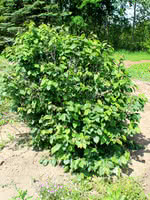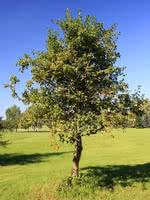Mon-Fri 9am - 5pm Mountain time
Beaked Hazelnut vs Washington Hawthorn
Corylus cornuta
Crataegus phaenopyrum
NOT AVAILABLE THIS SEASON - MIGHT RETURN
CUSTOM GROW
Beaked Hazelnut is a multi-stemmed, deciduous shrub native to North America.
It features smooth, grey bark and edible nuts. Beaked Hazelnut prefers a rich sandy-clay loam but will grow on poorer sites, and can be used as an understory shrub.
Note: You want more than one hazelnut to improve yields.
Washington Hawthorn is an attractive ornamental shrub that is dense enough to plant as a privacy screen. It produces clusters of white blooms in late spring to early summer.
Washington Hawthorn's red berries last throughout winter, bringing squirrels and birds to your property. In the fall, its foliage turns beautiful orange, scarlet, or purple.
One of the most overlooked trees on the prairies. This tree is often used as rootstock, a wildlife attractor, or a boulevard hedge. Give this one a second look.
This species is also known as one of the more salt-tolerant species for those with saline soils.
Please note: this plant is poisonous to dogs.
Beaked Hazelnut Quick Facts
Washington Hawthorn Quick Facts
In row spacing: 0.9 m (3 ft)

